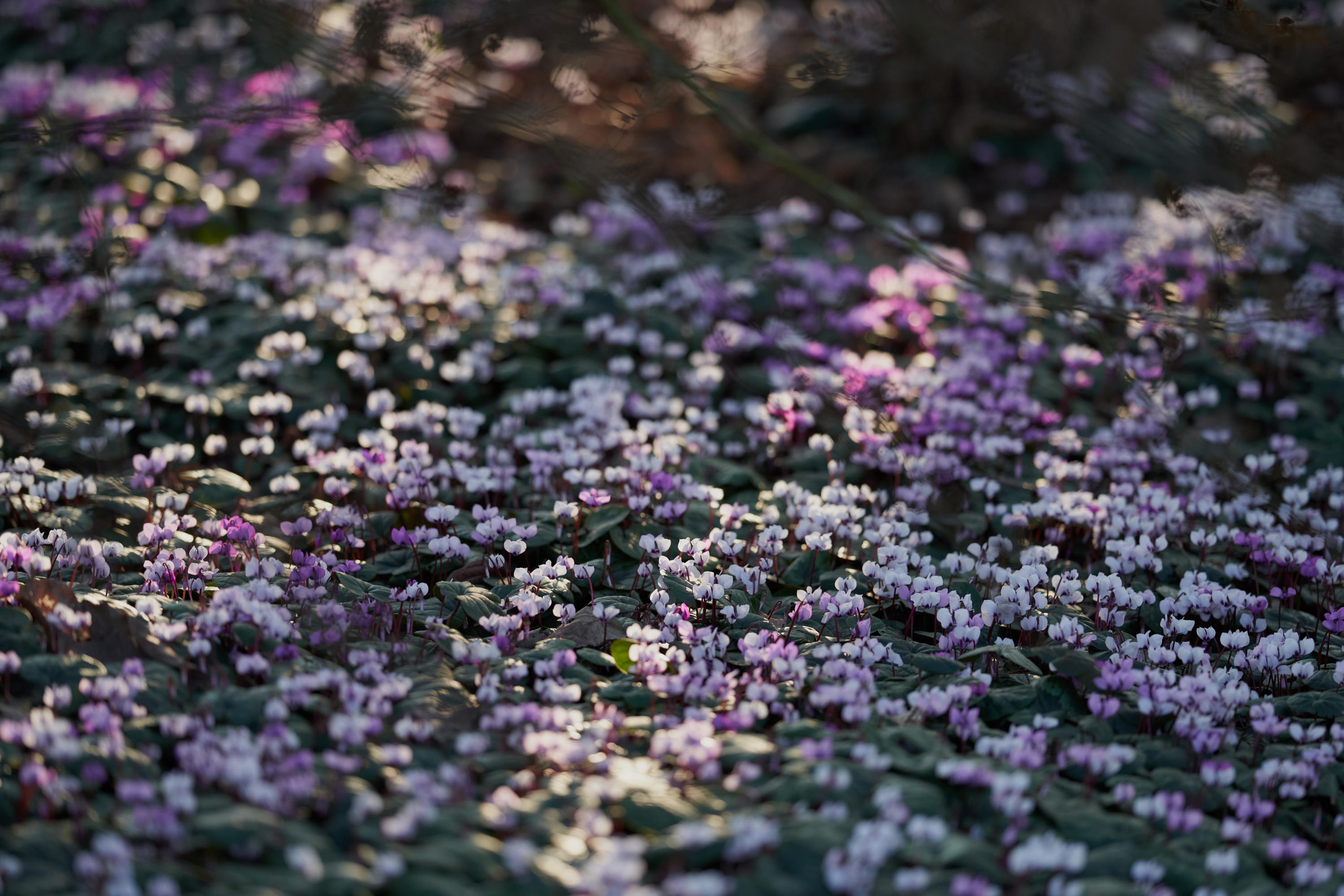Isabel Bannerman: The year’s first and most abundantly cheery, uplifting and undemanding of winter flowers
Cyclamen coum is one of the plants that lights up our gardens at this time of year.


Miniature electric-pink ears are emerging through a tapestry of leaves and bare brown ground. It is January and this is the first wonder of the gardening year. Cyclamen coum also come in paling shades from the plush of ruby to snow white. However, my gardening partner and husband covets only the deepest magenta flowers, combing plant nurseries and DIY shops for the most colour-saturated flowers wriggling through the pots and trays of small heart-shaped leaves. He remarks on the energy of these miniature enamel beauties and says he finds it strengthening.
He is, however, not a purist collector and, although he loves to set these garnets on a velvety ground under trees when planting these small corms, he also loves creating swathes of them in grass and beds, all muddled up with snowdrops and winter aconites. Snowdrops, yes, any time, but yellow aconites, Eranthis hyemalis, with puce cyclamen? Really? I, too, rejoice in the fringe of first green the aconites bring, that little lion’s mane of chrome, but I recoil rather at the brassy cocktail of lemoncello aconites with the cherry brandy-coloured C. coum, except perhaps in a jug indoors. Isn’t this rather sickly? Mr B feels strongly that it all helps to brighten up the dull days of February.
Ten years ago, feeling seasonally affected, we made a late-January pilgrimage to a Devon garden, still open for the National Garden Scheme, that is aptly named Higher Cheerubeere. We set off across Dartmoor, stopping to see St Mary’s Honeychurch, a shadow-filled 12th-century reliquary of lime plaster, no electricity and pigment-painted wall saints. It was mid afternoon, but felt later, raining horizontally when we arrived at the garden on its windswept bluff. Here, Jo Hynes and her family have devoted 30 years to making a garden teased out of acid clay. Jo says that, luckily, many galanthus and cyclamen like plenty of rain. Somehow, she grows 22 of the 23 known species of cyclamen, as well as 400 different snowdrops and a panoply of winter-flowering treats. A beekeeper, she homed in on winter flowerers to up the pollen and nectar forage on offer for her honeybees and the more needy bumblebees that keep no stores. She also wanted to emulate the meadows of cyclamen and snowdrops seen on many plant-finding trips ‘from the Crimea to the Golan Heights’. Given their origins in Asia Minor, it is surprising cyclamen can cope with the acid soils of Devon and Cornwall.
"Surely there is no more promiscuous self-sower than the aconite?"
Cyclamen are tuberous herbaceous perennials from the Mediterranean basin. Beth Chatto described their tubers as resembling ‘cowpats’. Hardy types tend to have small tubers, 2½in–4in in diameter, which store food manufactured by the small, rounded, lily-pad leaves — bronze beneath and frequently marbled grey on top — during the dormant period. For Cyclamen coum, this happens in summer. The leaves are as valued as the flowers by breeders and painters alike. Lucian Freud repeatedly painted all parts and stages of the plants, growing them in pots in his studio, and saying ‘they die in such a dramatic way… they crash down, their stems turn to jelly and their veins harden’. In C. coum and C. hederifolium, the flower stems corkscrew down, bearing seeds to the ground, where they are irresistible to ants that carry them off, spreading them about in the humus-rich woodlands and rocky crevices.
C. coum self-seeds well, but less effectively than summer-flowering hederifolium, which is possibly the origin of the dictum that they should not be grown together. Presumably, this is because the latter will out-compete the dainty winter coum in colonisation. This logic could perhaps be applied to the question of whether to plant C. coum mixed up with winter aconites. Surely there is no more promiscuous self-sower than the aconite? (I am relieved to realise this is not deadly poisonous — that being the other aconite or monkshood.) However you grow them, perhaps we can agree that C. coum are the year’s first and most abundantly cheery, uplifting and undemanding of winter flowers.
Higher Cheerubeere, Devon, opens in February for the National Garden Scheme. See www.ngs.org.uk
Exquisite houses, the beauty of Nature, and how to get the most from your life, straight to your inbox.
Isabel Bannerman is, along with her husband Julian, one of Britain's most renowned garden designers, with over 40 years of experience. The couple were granted the Royal Warrant of His Majesty King Charles III in 2024. Isabel's latest book, A Wilderness of Sweets: Making Gardens with Scented Plants, was published by Pimpernel Press earlier this year. You can see more of Isabel and Julian's work at bannermandesign.com.
